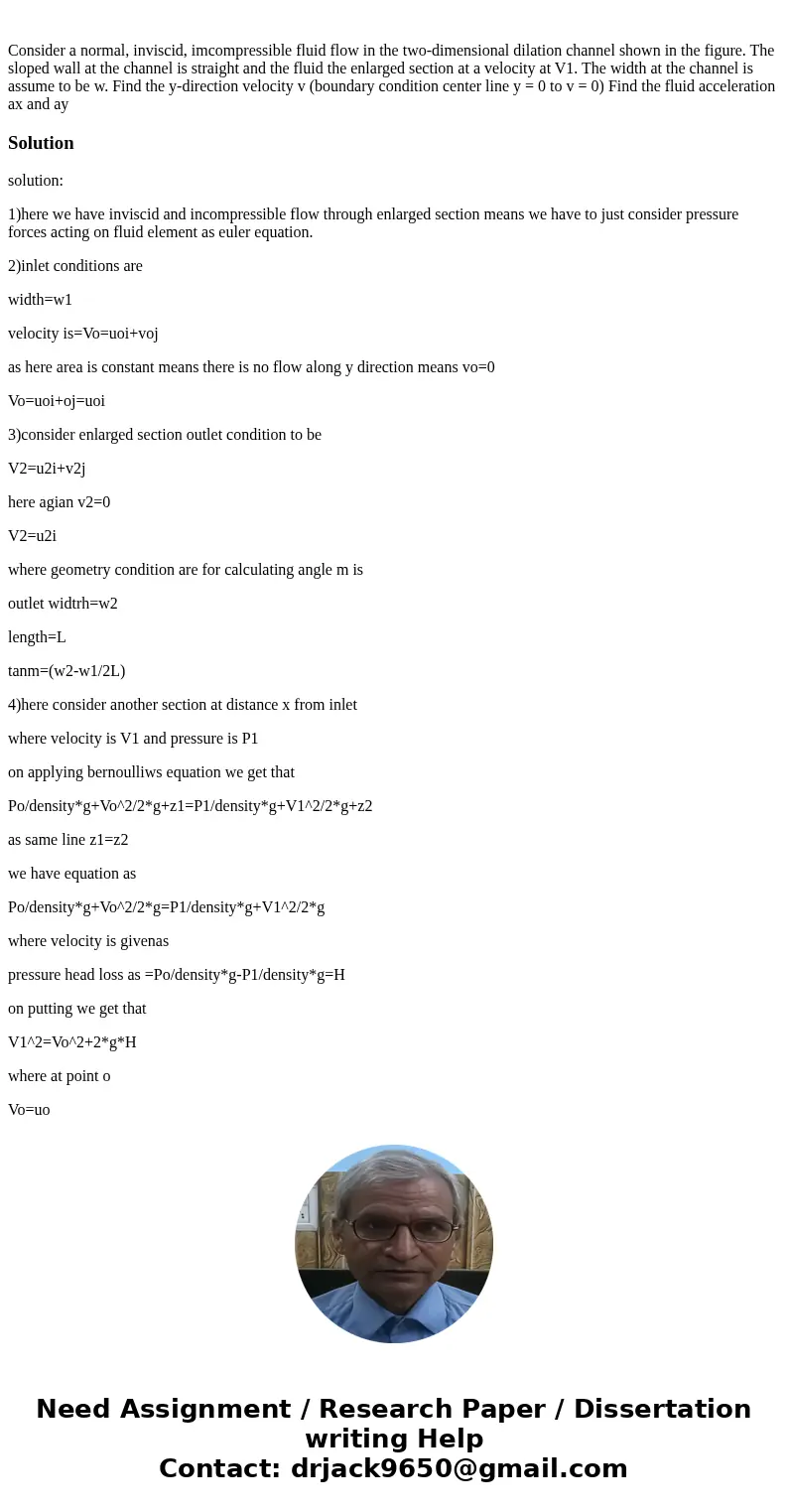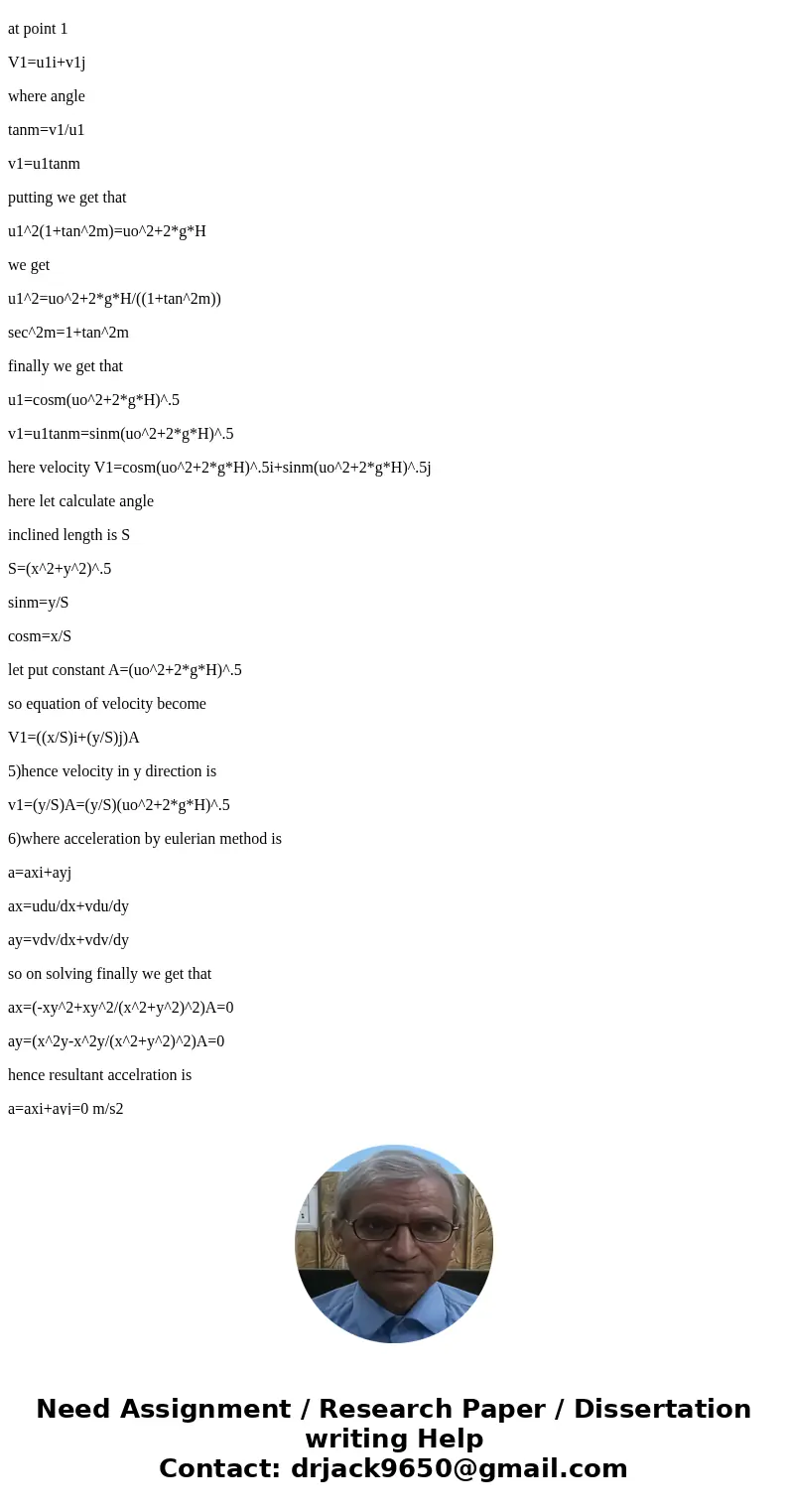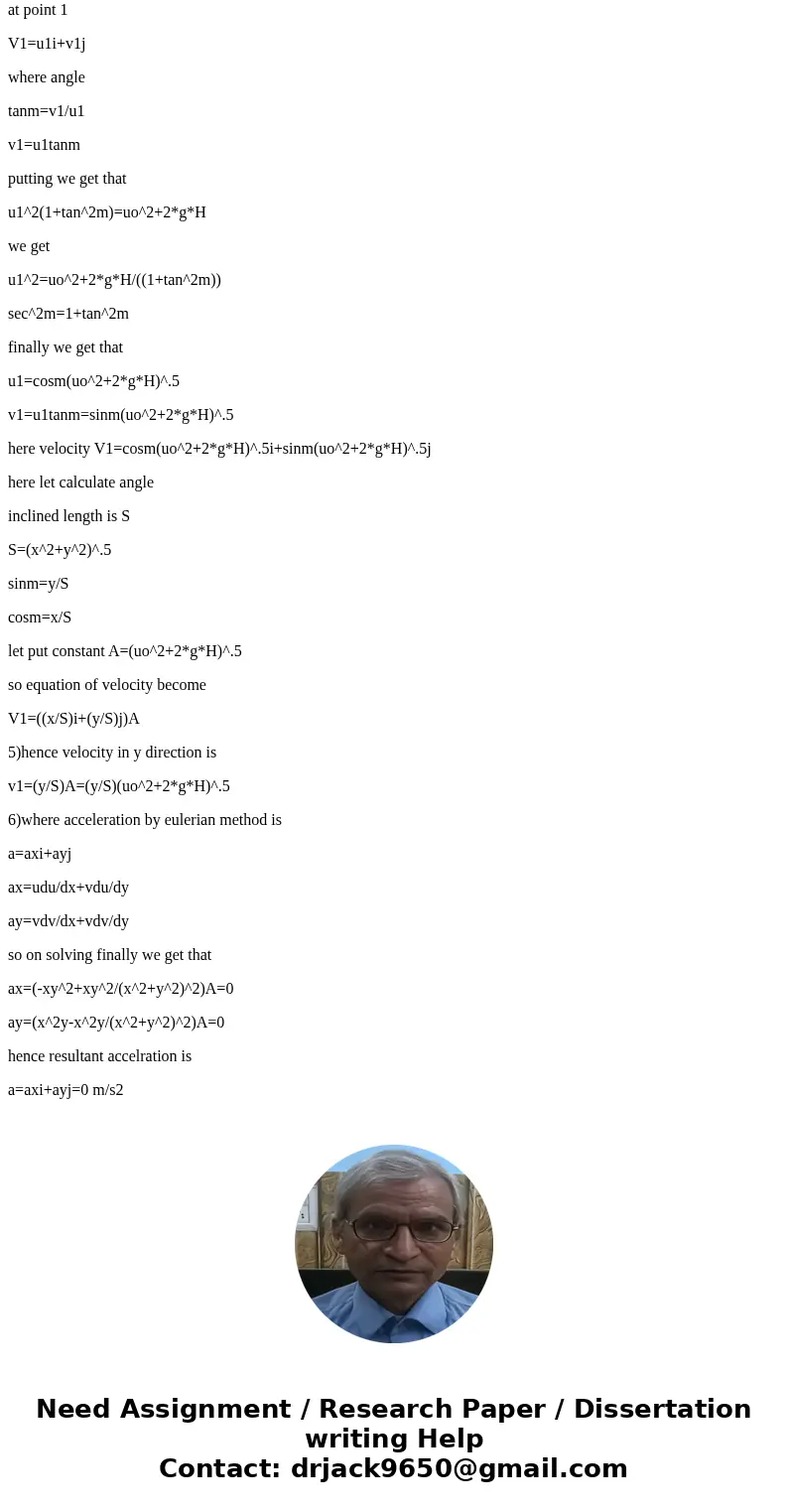Consider a normal inviscid imcompressible fluid flow in the
Solution
solution:
1)here we have inviscid and incompressible flow through enlarged section means we have to just consider pressure forces acting on fluid element as euler equation.
2)inlet conditions are
width=w1
velocity is=Vo=uoi+voj
as here area is constant means there is no flow along y direction means vo=0
Vo=uoi+oj=uoi
3)consider enlarged section outlet condition to be
V2=u2i+v2j
here agian v2=0
V2=u2i
where geometry condition are for calculating angle m is
outlet widtrh=w2
length=L
tanm=(w2-w1/2L)
4)here consider another section at distance x from inlet
where velocity is V1 and pressure is P1
on applying bernoulliws equation we get that
Po/density*g+Vo^2/2*g+z1=P1/density*g+V1^2/2*g+z2
as same line z1=z2
we have equation as
Po/density*g+Vo^2/2*g=P1/density*g+V1^2/2*g
where velocity is givenas
pressure head loss as =Po/density*g-P1/density*g=H
on putting we get that
V1^2=Vo^2+2*g*H
where at point o
Vo=uo
at point 1
V1=u1i+v1j
where angle
tanm=v1/u1
v1=u1tanm
putting we get that
u1^2(1+tan^2m)=uo^2+2*g*H
we get
u1^2=uo^2+2*g*H/((1+tan^2m))
sec^2m=1+tan^2m
finally we get that
u1=cosm(uo^2+2*g*H)^.5
v1=u1tanm=sinm(uo^2+2*g*H)^.5
here velocity V1=cosm(uo^2+2*g*H)^.5i+sinm(uo^2+2*g*H)^.5j
here let calculate angle
inclined length is S
S=(x^2+y^2)^.5
sinm=y/S
cosm=x/S
let put constant A=(uo^2+2*g*H)^.5
so equation of velocity become
V1=((x/S)i+(y/S)j)A
5)hence velocity in y direction is
v1=(y/S)A=(y/S)(uo^2+2*g*H)^.5
6)where acceleration by eulerian method is
a=axi+ayj
ax=udu/dx+vdu/dy
ay=vdv/dx+vdv/dy
so on solving finally we get that
ax=(-xy^2+xy^2/(x^2+y^2)^2)A=0
ay=(x^2y-x^2y/(x^2+y^2)^2)A=0
hence resultant accelration is
a=axi+ayj=0 m/s2



 Homework Sourse
Homework Sourse